 |
 |
|
 |
|
 |
|  |
|  |
|
 |
|
 |
|  |
|  |
|
 |
Sven Littkowski <I### [at] SvenLittkowski name> wrote:
> For some strange reason, it seems I am unable to change the location of
> the two colors inside my pigment_maps....
#declare Switch = 1;
#if (Switch)
#declare TextureA = texture {MyHullOutsideBottom};
#declare TextureB = texture {MyHullOutsideTop};
#else
#declare TextureA = texture {MyHullOutsideTop};
#declare TextureB = texture {MyHullOutsideBottom};
#end
Then redefine your texture maps using A and B name> wrote:
> For some strange reason, it seems I am unable to change the location of
> the two colors inside my pigment_maps....
#declare Switch = 1;
#if (Switch)
#declare TextureA = texture {MyHullOutsideBottom};
#declare TextureB = texture {MyHullOutsideTop};
#else
#declare TextureA = texture {MyHullOutsideTop};
#declare TextureB = texture {MyHullOutsideBottom};
#end
Then redefine your texture maps using A and B
Post a reply to this message
|
 |
|  |
|  |
|
 |
|
 |
|  |
|  |
|
 |
On 01.12.2017 20:32, Bald Eagle wrote:
> Sven Littkowski <I### [at] SvenLittkowski name> wrote:
>> For some strange reason, it seems I am unable to change the location of
>> the two colors inside my pigment_maps....
>
> #declare Switch = 1;
> #if (Switch)
> #declare TextureA = texture {MyHullOutsideBottom};
> #declare TextureB = texture {MyHullOutsideTop};
> #else
> #declare TextureA = texture {MyHullOutsideTop};
> #declare TextureB = texture {MyHullOutsideBottom};
> #end
>
> Then redefine your texture maps using A and B
>
>
Thanks. I actually found some errors already, but they are not with the
pigment_map.
But what I recognize, if I apply RBGT colors with transparency 0.75 to a
shape, and use a difference to take of another shape from it and that
shape has also transparency 0.75, the result is a pigment with no
transparency. Strange.
---
http://www.avg.com name> wrote:
>> For some strange reason, it seems I am unable to change the location of
>> the two colors inside my pigment_maps....
>
> #declare Switch = 1;
> #if (Switch)
> #declare TextureA = texture {MyHullOutsideBottom};
> #declare TextureB = texture {MyHullOutsideTop};
> #else
> #declare TextureA = texture {MyHullOutsideTop};
> #declare TextureB = texture {MyHullOutsideBottom};
> #end
>
> Then redefine your texture maps using A and B
>
>
Thanks. I actually found some errors already, but they are not with the
pigment_map.
But what I recognize, if I apply RBGT colors with transparency 0.75 to a
shape, and use a difference to take of another shape from it and that
shape has also transparency 0.75, the result is a pigment with no
transparency. Strange.
---
http://www.avg.com
Post a reply to this message
|
 |
|  |
|  |
|
 |
|
 |
|  |
|  |
|
 |
> On 01.12.2017 02:48, And wrote:
>> Sven Littkowski <I### [at] SvenLittkowski name> wrote:
>>> On 01.12.2017 01:32, And wrote:
>>>> I give you some value:
>>>> The size is radius, I post a picture, can find some value on it.
>>>
>>> Hi, big thanks.
>>>
>>> As I understand it, I need to add this media into the declaration of
>>> each sun, is that correct? And if so, would the sun sphere need to be
>>> hollow?
>>>
>>>
>>> ---
>>> http://www.avg.com
>>
>> Sun...no, this is for cloud.
>>
> Olala! Thanks for telling me. Will try it out. :-) :-D
>
> But we need to find a way, to get a glow around the two suns, too.
>
Emissive media with a sprerical pattern and some turbulance.
One sphere for the sun itself, and a larget, concentrical one, for the glow.
The media for the glow should have a lower emissivity that the main one.
The media for the sun should probably be OK using an uniform density. name> wrote:
>>> On 01.12.2017 01:32, And wrote:
>>>> I give you some value:
>>>> The size is radius, I post a picture, can find some value on it.
>>>
>>> Hi, big thanks.
>>>
>>> As I understand it, I need to add this media into the declaration of
>>> each sun, is that correct? And if so, would the sun sphere need to be
>>> hollow?
>>>
>>>
>>> ---
>>> http://www.avg.com
>>
>> Sun...no, this is for cloud.
>>
> Olala! Thanks for telling me. Will try it out. :-) :-D
>
> But we need to find a way, to get a glow around the two suns, too.
>
Emissive media with a sprerical pattern and some turbulance.
One sphere for the sun itself, and a larget, concentrical one, for the glow.
The media for the glow should have a lower emissivity that the main one.
The media for the sun should probably be OK using an uniform density.
Post a reply to this message
|
 |
|  |
|  |
|
 |
|
 |
|  |
|  |
|
 |
> Then change to media:
>
Not enough samples. Try using at least 3 times as many, maybe even as
much as 50+ times more.
Post a reply to this message
|
 |
|  |
|  |
|
 |
|
 |
|  |
|  |
|
 |
Problem solved, big thanks! :-D
---
http://www.avg.com
Post a reply to this message
|
 |
|  |
|  |
|
 |
|
 |
|  |
|  |
|
 |
On 01.12.2017 21:39, Alain wrote:
> Emissive media with a sprerical pattern and some turbulance.
> One sphere for the sun itself, and a larget, concentrical one, for the
> glow. The media for the glow should have a lower emissivity that the
> main one. The media for the sun should probably be OK using an uniform
> density.
Ahhhh.... yes. :-)
Will try, and update here.
---
http://www.avg.com
Post a reply to this message
|
 |
|  |
|  |
|
 |
|
 |
|  |
|  |
|
 |
Am 02.12.2017 um 02:11 schrieb Sven Littkowski:
> For some strange reason, it seems I am unable to change the location of
> the two colors inside my pigment_maps ("MyHull" texture and "MyInterior"
> texture, both at the top of the code), even when changing the numeric
> values. Strange.
You can't just change the numeric value and expect that to work. You
need to re-order the entries according to their new numeric values.
Post a reply to this message
|
 |
|  |
|  |
|
 |
|
 |
|  |
|  |
|
 |
On 01.12.2017 23:58, clipka wrote:
> Am 02.12.2017 um 02:11 schrieb Sven Littkowski:
>> For some strange reason, it seems I am unable to change the location of
>> the two colors inside my pigment_maps ("MyHull" texture and "MyInterior"
>> texture, both at the top of the code), even when changing the numeric
>> values. Strange.
>
> You can't just change the numeric value and expect that to work. You
> need to re-order the entries according to their new numeric values.
>
Thanks.
The problem was a solved. I rewrote the entire pigment definition, and
used a different scale and transform. I got some really strange effects
along that way, but i have now the result I wanted. :-)
---
Diese E-Mail wurde von AVG auf Viren geprüft.
http://www.avg.com
Post a reply to this message
|
 |
|  |
|  |
|
 |
|
 |
|  |
|  |
|
 |
clipka <ano### [at] anonymous org> wrote:
> Am 01.12.2017 um 20:42 schrieb Sven Littkowski:
> > The images still look nice. Sad only, that I self have no understanding
> > of media, I wished I could help here. Sounds like you should propose a
> > new feature inside the BETA section of this newsgroup, or expanding
> > existing features to make it possible to increase the density further.
>
> The issue isn't so much whether it is /possible/ to increase the
> density, but rather whether doing so gives /realistic results/.
>
You are correct.
> The problem is that the scattering media model is designed for cases
> where the media's density is non-uniform, but low enough that the single
> scattering contribution is dominant (i.e. a typical light ray will be
> deflected from its initial direction at most once), and the multiple
> scattering contribution (i.e. light that is deflected from its initial
> direction more than once) is negligible.
>
> Compare this to the subsurface light transport model, which is
> specifically designed for cases where the density is pretty much
> uniform, but high enough that the multiple scattering contribution is
> dominant.
>
>
> To extend the scattering media model in such a manner that it gives
> reasonably realistic results for high-density media, a monte-carlo-ish
> rendering approach would have to be used, where secondary rays would be
> shot here and there along the light's path (even recursively). Expect
> noisy results and/or high rendering times.
>
> This is in fact on my wishlist, but other stuff takes priority.
I respect you. org> wrote:
> Am 01.12.2017 um 20:42 schrieb Sven Littkowski:
> > The images still look nice. Sad only, that I self have no understanding
> > of media, I wished I could help here. Sounds like you should propose a
> > new feature inside the BETA section of this newsgroup, or expanding
> > existing features to make it possible to increase the density further.
>
> The issue isn't so much whether it is /possible/ to increase the
> density, but rather whether doing so gives /realistic results/.
>
You are correct.
> The problem is that the scattering media model is designed for cases
> where the media's density is non-uniform, but low enough that the single
> scattering contribution is dominant (i.e. a typical light ray will be
> deflected from its initial direction at most once), and the multiple
> scattering contribution (i.e. light that is deflected from its initial
> direction more than once) is negligible.
>
> Compare this to the subsurface light transport model, which is
> specifically designed for cases where the density is pretty much
> uniform, but high enough that the multiple scattering contribution is
> dominant.
>
>
> To extend the scattering media model in such a manner that it gives
> reasonably realistic results for high-density media, a monte-carlo-ish
> rendering approach would have to be used, where secondary rays would be
> shot here and there along the light's path (even recursively). Expect
> noisy results and/or high rendering times.
>
> This is in fact on my wishlist, but other stuff takes priority.
I respect you.
Post a reply to this message
|
 |
|  |
|  |
|
 |
|
 |
|  |
|  |
|
 |
Okay, I am ready to present the habitat module to you all!
The attached images show it by night, and by day. You can see the lower
deck and the main deck. And I show you the hovering habitat without and
with surface normal. The habitat module is not entirely finish, but
complete enough to present it to you all here, and to start a discussion
about it.
--------------------------------
The project behind that is this: every interested POV-Ray community
member can download the include file for this habitat, and add his/her
own interior designs and items to it. Then we all can render the main
scene with our all individual habitats in it! Everyone has an own taste,
so let's see what will happen!
--------------------------------
And here's the idea behind.
Welcome to a world very distant in the future from now!
Mankind has evolved, became mature. Earth's ecological systems almost
died under the "management" of us humans. After centuries of regional
and international conflicts, finally the need to save our planet became
urgent enough that mankind united. One united nation. A rigorous birth
control regime was introduced, bringing over several generation the
total human population down to 50 million, of which a big part lives
off-world, on other celestial bodies within the human solar system. Mars
and Venus have been terraformed, to some part by exchanging components
of their atmospheres with each other, and even the moon has been
terraformed. There are no cities on Earth anymore, but there are the
Towers - a few dozen kilometer-high towers erected far away from the
edges of the tectonic plates. mankind developed new materials and had
break-throughs in nanotechnology and Wendelstein technology.
Miniaturized nuclear fusion reactors, and very potent wind and solar
energy (huge solar stations around the sun and on the Mercury surface)
power everything, and nanotechnology allows to control the shape and
properties of intelligent materials. Those huge towers harbor on their
sides thousands of habitats.
Each human, after having reached mental maturity, has an own habitat -
shape-changing hovering mini environments that are fully controlled by
the human who lives inside. Inside, the air is clean and free of any
bacteria, while Earth has been reclaimed by its own wild nature. Humans
are now 2.20 m (units) tall and of a very slim body design. All races
are mixed. Life expectation: 250 to 300 years. When a habitat is docked,
its shape melts together with the tower's material and forms a round
bump on the surface. When the human decides to depart, the bump changes
into the discus shape and separates. through material control on nano
level. The humans spend almost the entire life in them, their bodies not
anymore used for the wild nature full of pathogens, bacteria, spores and
other threads. To go out, it takes the habitat 15 minutes to grow a
nano-layer over the human body for protection.
The habitats can connect to each other through the three ports each
module has. This allows gatherings and visits. But in that era, humans
are not used any longer to connect physically, that has become rare. For
redundancy, the habitat has 6 Wendelstein reactors, and 3 IQ systems. An
antigrav ring with 70 antigrav units move the habitat. The habitat reads
the electricity of the human brain waves and learns from earliest age to
interpret the thoughts of its inhabitant. Through the same cableless
interaction, our distant descendants communicate with each other and
work in the cultural and scientific fields - the only fields where
manpower is still desired. The solar IQ network is a conglomerate of
human and artificial intelligence, fed by the habitats, connects,
learns, adjusts where it has to be done, and executes tasks.
Humans let their habitats hover above and below clouds, land them or
water them, and have (despite the initial hardship) brief excursions for
pleasure or study. There is in-vitro food growing inside the habitats,
but many habitats are seen having plants and even trees inside, even
small hills. The control on nano level makes this possible. The lower
deck features three exit areas to enter the planet surface and nine
areas for storage, accommodation or production. The main deck features
more furniture or even patches of nature. The transparency of the cupola
can fade away to make the cupola visually impenetrable. Just the
thoughts of the human inhabitant can make the artificial intelligence of
the habitat reshaping surfaces and furniture, changing colors and
textures...
And that is where you come in: design your own habitat!
Do not change the blue antigrav module, and do not change the outside
texture of the lower part of the habitat disc. Do not change the shape
of the habitat. But feel free to make any other change you want!
---
Diese E-Mail wurde von AVG auf Viren geprüft.
http://www.avg.com
Post a reply to this message
Attachments:
Download 'sl - cloud cities - habitat - night - lower floor.jpg' (115 KB)
Download 'sl - cloud cities - habitat - night - upper floor.jpg' (46 KB)
Download 'sl - cloud cities - habitat - day - below - texno.jpg' (68 KB)
Download 'sl - cloud cities - habitat - day - upper floor - texno.jpg' (112 KB)
Download 'sl - cloud cities - habitat - day - below - texyes.jpg' (205 KB)
Download 'sl - cloud cities - habitat - day - upper floor - texyes.jpg' (218 KB)
Preview of image 'sl - cloud cities - habitat - night - lower floor.jpg'
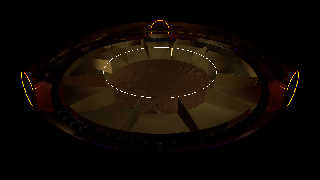
Preview of image 'sl - cloud cities - habitat - night - upper floor.jpg'
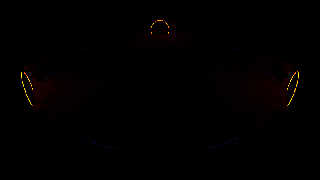
Preview of image 'sl - cloud cities - habitat - day - below - texno.jpg'
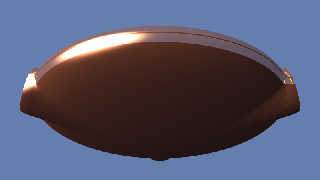
Preview of image 'sl - cloud cities - habitat - day - upper floor - texno.jpg'
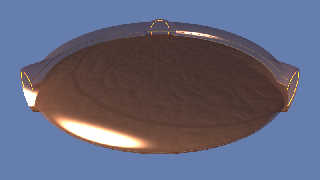
Preview of image 'sl - cloud cities - habitat - day - below - texyes.jpg'
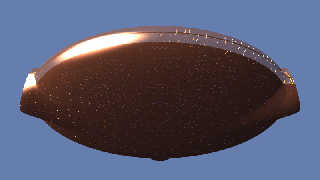
Preview of image 'sl - cloud cities - habitat - day - upper floor - texyes.jpg'
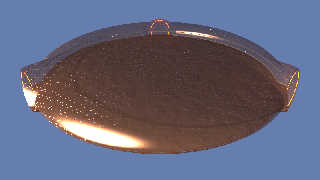
|
 |
|  |
|  |
|
 |
|
 |
|  |
|
 |




![]()